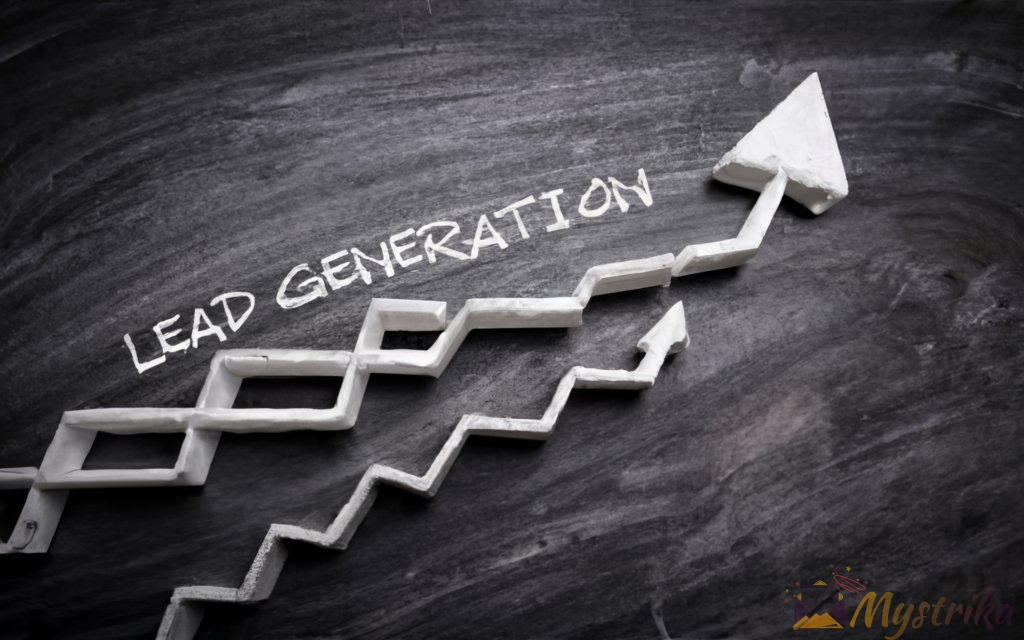Tired of pouring hard work and money into lead generation only to see it trickle away through a leaky pipeline? In this comprehensive guide, we provide the blueprint for constructing an optimized pipeline to accelerate conversions, align sales and marketing, and ultimately drive higher revenue. You’ll learn proven strategies for sourcing, capturing, nurturing, qualifying, and converting more leads. We also deep dive into critical technologies and provide solutions for common pipeline challenges. Follow these tips and transform your pipeline into a high-performance revenue machine.
What Is a Lead Generation Pipeline and Why Is It Important?
For any business, the lifeblood that keeps operations running is a steady flow of qualified leads that can be nurtured and converted into paying customers. This is where implementing a structured lead generation pipeline comes into play.
Definition of a Lead Generation Pipeline
A lead generation pipeline is the end-to-end process of attracting, capturing, nurturing, qualifying, and converting marketing-generated leads into new customers. It encompasses all the repeatable systems, workflows, metrics, content, and tools used to drive lead generation and conversion.
The pipeline aligns marketing and sales around common processes and shared goals for systematic lead generation. It provides visibility into the health and velocity of lead flow through the purchase funnel. Ideally, the pipeline stages map directly to the typical buyer’s journey for your products or services.
Here is an example of a basic lead generation pipeline and its key stages:
Lead Sourcing: This initial pipeline stage focuses on lead generation tactics to attract and capture new leads. This may include content marketing, events, referrals, advertising, website conversions, and outbound prospecting.
Lead Nurturing: Once captured, raw leads enter the lead nurturing stage where they are scored, segmented, and engaged through targeted multi-channel campaigns designed to build awareness, interest, and intent.
Lead Qualification: As leads progress through the nurturing stage, data is used to qualify and assess sales-readiness based on activity, engagement, profile fit, and scored attributes. Qualified leads are passed onto the sales team.
Opportunity Creation: Sales engages with qualified, sales-ready leads to initiate the opportunity creation stage. This involves prospecting calls, demos, quoting, and deal negotiation to progress the opportunity.
Customer Conversion: The final stage of the pipeline involves systematically progressing opportunities through the sales cycle to close and convert them into customers.
In summary, the lead generation pipeline provides an end-to-end framework to track a lead from initial discovery through to becoming a customer. It enables alignment between sales and marketing to accelerate growth.
Benefits of Implementing a Lead Generation Pipeline
There are a multitude of benefits that a well-defined and managed lead generation pipeline provides for driving business growth:
Increased Visibility
The pipeline provides clear visibility into lead flow, volumes, velocity, quality, and conversion rates. Sales and marketing teams gain data-driven insights to understand what’s working and what needs optimization.
Enhanced Marketing and Sales Alignment
With shared goals, service-level agreements, and transparency through the pipeline, marketing and sales teams can align around lead process and strategy. This leads to improved collaboration and outcomes.
More Predictable Lead Flow
A structured pipeline makes lead generation more predictable and repeatable. Reliable lead flow enables sales to effectively plan and forecast revenue targets.
Accelerated Lead Velocity
Well-nurtured, sales-ready leads that meet qualification criteria move rapidly through the pipeline. This increases lead conversion rates and shortens sales cycles.
Increased Relevance
Targeted lead nurturing based on interests, behaviors, and profile filters increase relevancy. Better qualified leads reduce wasted sales effort.
Improved Marketing ROI
With pipeline analytics, marketing can optimize programs and channels to improve marketing ROI on lead generation activities.
In summary, a well-structured lead generation pipeline is a gamechanger for managing predictable, high-quality lead flow to accelerate business revenue and growth. It provides critical visibility while enhancing sales and marketing alignment around lead generation and conversion.
Let me know if you would like me to modify or expand this section in any way. I can provide examples or go into more detail if needed. I will wait for your feedback before continuing.

Key Components of an Effective Lead Generation Pipeline
Constructing an optimized lead generation pipeline is crucial for driving predictable revenue and scalable growth. There are five key components that make up the foundation of a high-performance pipeline.
Lead Sourcing
Lead sourcing represents the top of the pipeline and involves customer acquisition strategies for driving new lead generation. This can include:
Inbound Tactics
- Content Marketing – Blogs, guides, webinars, videos
- SEO – Optimizing for buyer keywords and topics
- Social Media – Organic and paid social promotion
- Website Conversion – Calls-to-action, forms, chatbots
Outbound Tactics
- Email Outreach – Targeted cold outreach and newsletters
- Direct Mail – Personalized campaigns with call-to-action
- Teleprospecting – Lead list calling and appointment setting
Referrals
- Customer Advocacy – Referral programs, case studies, WOM
- Partner Programs – Reseller, affiliate, and channel partnerships
Events (Virtual/In-Person)
- Webinars / Webcasts – Educational and product demos
- Tradeshows and Conferences – Lead generation booths
- Meetups and Networking Events – For awareness and networking
Advertising
- Pay-Per-Click Ads – Google, Bing, Facebook, LinkedIn
- Display and Retargeting Ads – Placement on third-party sites
- Podcast and Streaming Audio Ads – Pre-roll and mid-roll audio ads
Lead List Purchase
- Direct Marketing Lists – Industry-specific lead lists
- Lookalike Audience Targeting – Find audiences similar to customers
A multi-channel sourcing strategy combining both inbound and outbound tactics is recommended for sustainable lead generation.
Lead Capture
Once leads are driven to your website or destinations, the next step is lead capture. This involves converting interested prospects into leads through an exchange of contact information and intent data. Lead capture utilizes:
Landing Pages
Dedicated pages with compelling copy, value prop, and calls-to-action. Form fields should collect contact, profile, and interest data.
Web Forms
Contact forms, pop-ups, and embedded forms to convert website visitors into leads.
Chatbots
AI-powered chatbots to engage website visitors and capture leads through conversational quizzes.
Email Conversion
Call-to-action links in campaigns leading to landing pages or contact forms.
Events and Webinars
In-person or virtual events capturing lead data through scans, forms, surveys, and quizzes.
Social Conversions
Lead generation ads and sponsored content leading to landing pages.
Direct Mail
Personalized mail campaigns with lead response mechanisms.
Optimized lead capture forms should be brief, mobile-friendly, and collect GDPR consent. Data collected provides the foundation for lead scoring and nurturing.
Lead Nurturing
Once new leads enter the pipeline, the lead nurturing stage focuses on developing relationships through relevant, value-add engagement. Goals of nurturing include:
- Increasing brand awareness and familiarity
- Communicating key differentiators
- Establishing credibility and trust
- Addressing common questions and concerns
- Guiding prospects through the buyer’s journey
Nurturing tactics include:
Multi-Channel Campaigns
Omnichannel campaigns combining email, social ads, content, and direct mail sent based on lead segment, profile, and score.
Personalized Content
Customized content including guides, articles, and emails based on individual interests.
Lead Segmentation
Group leads based on profile, firmographics, behavior, and engagement attributes.
Lead Scoring
Assign point values to profile and behavioral data to gauge sales readiness.
AB Testing
Test subject lines, content, and offers to optimize nurture performance.
Event-Triggered Actions
Send specific messages based on defined actions like email clicks, form fills, site visits.
CRM Integration
Integrate with CRM to track nurture campaigns and engagement in real-time.
Successful nurturing develops more qualified, sales-ready leads to progress down the pipeline.
Lead Qualification
At this pipeline stage, leads are actively evaluated and qualified to assess fit, intent, and readiness for sales contact. Qualification helps identify which leads justify direct sales outreach based on:
Lead Score Thresholds
Leads exceeding minimum lead score thresholds are deemed sales-qualified.
Profile Qualifiers
Leads matched to target job roles, seniority, industry, and company size.
Engagement Levels
Leads with high email open rates, form fills, content views.
Behavioral Activity
Visits to pricing or product pages indicate higher intent.
CRM Data
Integration with CRM and predictive scoring can assist qualification.
Qualified, sales-ready leads are categorized by tiers based on opportunity value to inform sales routing. Buyers not yet sales-ready remain in the nurturing stage.
Lead Conversion
At this final pipeline stage, sales teams take over, engaging qualified leads to progress opportunities and ultimately convert them into customers.
The sales process involves the following:
- Initial discovery call to build rapport and probe needs
- Product demonstration tailored to their business issues
- Quote preparation aligned to budget parameters
- Proposal and contract delivery and negotiation
- Addressing stakeholders’ questions and objections
- Procurement, approval, payment, and onboarding
For optimal close rates, sales leverages marketing content and collateral to educate and persuade buyers. Close collaboration with marketing also ensures insights are captured from won/lost deals, customers, and prospects to optimize the pipeline.
This full lifecycle, from lead in to customer out, represents the end-to-end flow of an optimized lead generation pipeline. Establishing these foundational components lays the groundwork for impactful marketing and sales synergy.
Let me know if you would like me to modify or expand on any aspect of this section. I can add more examples and details as needed. Please provide any feedback before I continue writing.
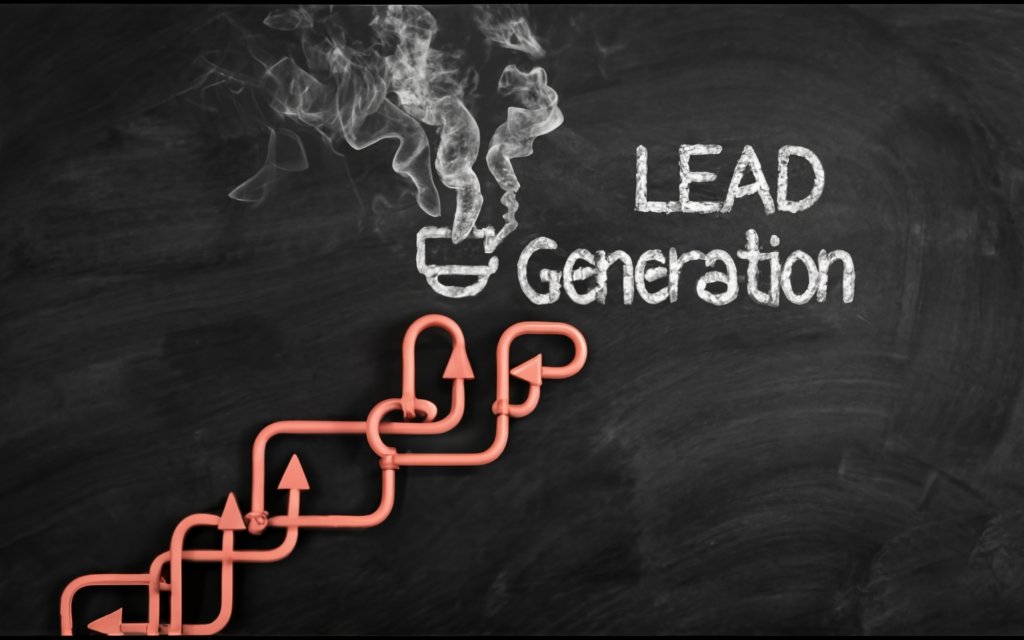
How to Build Your Lead Generation Pipeline
Now that we’ve covered the key components of an effective lead generation pipeline, let’s discuss how to actually build and implement one for your business. Follow these six steps:
Identify Your Target Audience and Ideal Customer Profile
The first step is conducting in-depth buyer persona research to understand your ideal customers. Important persona dimensions include:
- Demographic Profile: job title, seniority, department, industry, company size
- Challenges and Pain Points: issues they face day-to-day
- Goals and Motivations: desired outcomes and objectives
- Buyer Journey: awareness > consideration > decision
- Key Questions: product questions, problems needing solved
Developing detailed buyer personas for each target segment provides the foundation for messaging, content, and go-to-market strategies.
Map the Buyer’s Journey to Inform Content Strategy
Next, map out the typical buyer’s journey to understand the customer experience across awareness, consideration, evaluation and purchase stages.
Identify the questions and concerns your prospects face at each stage. This enables you to create informative content that engages and assists buyers through each phase.
Content should aim to:
- Attract – Interesting, entertaining, helpful
- Educate – Address questions, guide problem-solving
- Inspire – Provide vision, showcase success
- Direct – Call-to-actions, conversion focus
Optimization tip: Structure your website and blogs around buyer journey stages and topics. Develop content offers like guides, demos and free trials to capture leads.
Establish a Multi-Channel Lead Generation Approach
The most effective pipeline combines both inbound and outbound tactics across multiple channels.
Inbound strategies attract visitors to your site by publishing valuable content that ranks well with search engines and draws social engagement. This establishes your brand as an authority.
Outbound strategies involve proactively targeting and promoting to your ideal buyers where they spend time online. This enables more direct lead generation.
An omnichannel mix might include:
- Content marketing – blogs, guides, case studies
- Social media marketing – organic/paid promotion
- SEO – keyword targeting, content optimization
- Paid advertising – search, social, display, retargeting
- Email marketing – drip campaigns, nurturing
- Website optimization – calls-to-action, forms
- Direct mail – personalized campaigns
- Events – webinars, trade shows
Implement Lead Scoring and Qualification Models
Lead scoring and qualification systems enable you to identify and prioritize sales-ready leads.
Profile Scoring assigns points based on fit criteria like job title, department, company size.
Behavioral Scoring assigns points based on engagement actions like email opens, clicks, form fills, page visits.
Combine profile + behavioral scores to give each lead an overall Lead Score.
Define
Lead Nurturing Strategies to Move Leads Down the Funnel
Lead nurturing represents the crucial middle stage of the pipeline where marketing focuses on developing relationships with prospects to guide them through the buyer’s journey.
Here are proven nurturing strategies and tactics to progress leads down the pipeline funnel toward conversion:
Develop Compelling, Personalized Content for Each Buyer Stage
Leads enter the pipeline with varying levels of product awareness and buying readiness. Targeted content helps guide prospects through each stage.
Stage 1 – Problem Awareness
Leads realize they have a business issue but may not grasp the specifics. Content should aim to help leads better understand their needs and challenges.
- Blog posts and articles outlining common pain points, use cases, and cost of ignoring the problem
- Quizzes and assessments for leads to self-evaluate their gaps and needs
- Third-party data and research validating the problem
Stage 2 – Solution Exploration
Now aware of their challenges, leads start exploring options. Content focuses on educating leads on features and capabilities of your solution.
- Product overview guides explaining your offering and value proposition
- Blog posts detailing product features and customer examples
- Comparison charts vs competitors
- Product demo videos and free trials
Stage 3 – Solution Evaluation
Leads analyze whether your solution best fits their needs. Content aims to provide evidence on viability and address concerns.
- ROI calculators and business case studies demonstrating solution value
- Customer testimonials and case studies in their industry
- Analyst research reports validating your product
- Product tour webinars and Q&A sessions
Stage 4 – Decision Validation
Prospects are convinced of the solution but need confidence in vendor choice. Content reinforces your unique differentiators.
- Competitive advantage information – strengths vs competitors
- Sample implementation plans and methodology
- Pricing and payment model content
- Security, privacy, and compliance specifics
Personalized content tailored to individual leads based on interests and activity accelerates conversion.
Promote Content Across Multiple Digital Channels
With buyers consuming content across multiple channels, an omnichannel nurturing approach is vital for engagement.
Email Nurturing
Segment leads for targeted email campaigns with relevant content attachments, gated assets, and personalized messaging.
Social Media Engagement
Promote content and interact with connections and followers based on their demographics, interests, and intent.
Retargeting Ads
Remarket content offers and ads across channels to leads who previously visited your website or landing pages.
Direct Mail Nurturing
Send exclusive content previews, magazines, samples and invites by direct mail based on lead attributes.
Mobile Engagement
Deliver content through SMS, mobile messaging apps, ads, and push notifications based on mobile profiles and usage.
Chatbot Nurturing
Use conversational bots on your website to provide personalized content and recommendations to site visitors based on their needs.
An omnichannel approach ensures prospects consume content through their preferred channels.
Leverage Marketing Automation and Lead Scoring
Marketing automation and lead scoring allows you to continually refine and optimize content relevance as leads progress through stages.
Lead Segmentation
Group leads based on demographic, firmographic, and behavioral data to align content to their buyer stage.
Lead Scoring
Score lead engagement and activity to inform content personalization and sales handoff timing.
Trigger-Based Content
Automate sending specific, personalized content based on events like email clicks, page visits, or form fills.
CRM Integration
Sync lead data and engagements between your CRM and marketing automation platforms to track nurture performance.
Test content variations, subject lines, and sender names/avatars to increase campaign effectiveness.
Reporting and Analytics
Analyze open rates, click-through rates, content consumption, and conversions to optimize nurture programs.
Predictive Lead Scoring
Leverage AI to determine propensity to buy based on thousands of predictive data variables.
Automation and scoring allows you to orchestrate the perfect combination of content, channels, and timing for each lead.
Track Engagement Metrics to Identify Areas for Optimization
By closely monitoring a range of engagement metrics, you gain critical insight into content and channel performance.
Open rates, click-through rates, email performance by segment, unsubscribes, social shares, and conversions.
Content Metrics
Most popular assets, content consumption trends, asset downloads, and content referrals.
Web Metrics
Traffic sources, page views, site searches, form fills, time on site, and exit pages.
Social Media Metrics
Impressions, clicks, shares, conversions, engagement rate, and follower growth.
Marketing originated leads, sales accepted leads, sales qualified leads, opportunity pipeline, and closed revenue.
Analyzing metrics helps identify high-performing content and channels to double down on and areas needing optimization. Continually refining based on data drives pipeline productivity.
In summary, compelling and personalized content, leveraging automation and omni-channel delivery, provides a steady drumbeat that marches leads down the funnel.
Please let me know if you would like me to modify or expand on any part of this section. I can provide more examples as needed.
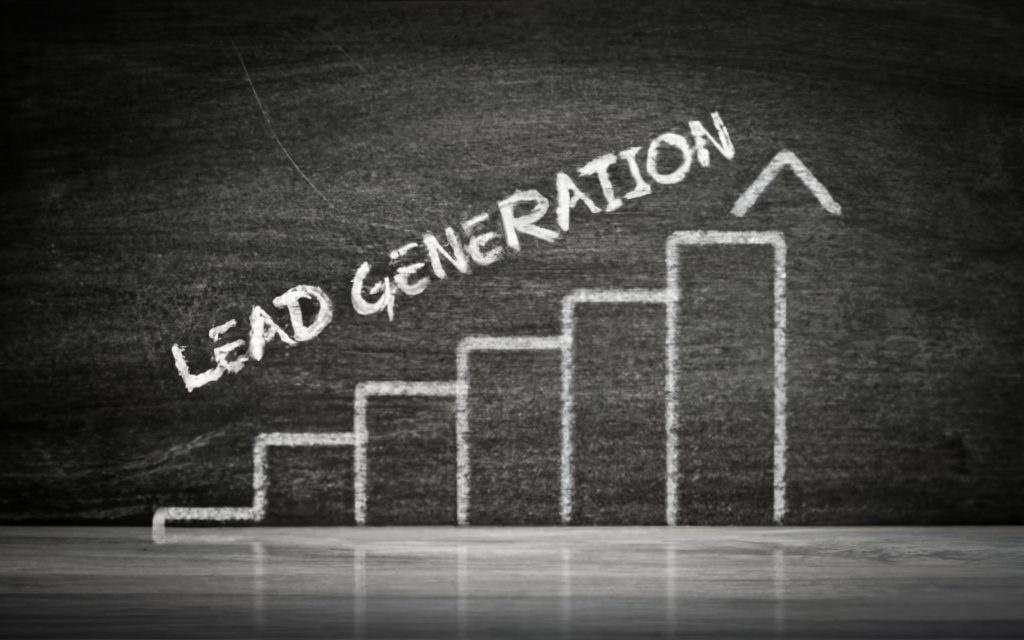
Key Metrics to Track for Lead Generation Pipeline Success
Implementing robust tracking and reporting of lead generation pipeline metrics provides visibility into overall pipeline health and productivity.
Here are the key performance indicators (KPIs) that should be monitored:
Number of Leads Generated
This fundamental metric represents the volume of new leads entering the top of the pipeline over a period. It is often measured monthly or quarterly and segmented by:
- Source – traffic channels, campaigns, events, referrals
- Type – inbound vs outbound
- Quality – scored lead grade
Lead volume reveals how successful lead gen efforts and spend are at driving pipeline flow. Useful supplemental metrics include:
- Lead to Opportunity Conversion Rate – % of leads becoming opps
- Cost Per Lead – marketing cost to generate a lead
Benchmarks:
- B2B: ~10% of traffic converted to leads
- B2C: ~2-5% of traffic converted to leads
Lead Quality Score
Lead scoring models assign points to leads based on profile, behavior, and engagement data to rate sales readiness from poor to excellent.
Typical factors include:
- Firmographics – company, industry, employee count
- Demographics – title, role, seniority
- Engagement – form fills, site visits, email opens
- Behavior – content downloads, page views
Calculating average lead score for both new and nurtured leads reveals the impact of nurturing on improving quality.
Benchmarks:
- New leads: 30-50 score
- Nurtured leads: 60-80 score
Lead to Customer Conversion Rates
The percentage of leads that ultimately become paying customers is a critical pipeline success metric. This pipeline conversion rate can be measured for:
- New vs Nurtured Leads – assessing nurturing impact
- By Lead Source – identifying best channels
- By Lead Quality Tier – focusing sales effort
A baseline target conversion rate is 10-20% for B2B businesses. Anything above 30% is excellent.
Cost Per Lead
Determining the investment required to generate pipeline leads provides insight into the efficiency of lead gen activities. Cost per lead is calculated as:
Total Lead Generation Marketing Spend
/
Number of Leads Generated
Cost per lead often differs significantly by channel, so individual channel CPL should also be tracked.
Benchmarks:
- B2B product businesses: $60-$120 CPL
- B2C product businesses: $40-$90 CPL
- Services businesses: Up to $200+ CPL
Sales Cycle Length
The average number of days it takes for a new lead to move through the pipeline stages to become a customer. This metric reveals bottlenecks and the pipeline velocity. It’s calculated as:
Date Lead Converted to Customer – Date Lead Created
Faster sales cycle lengths indicate an optimized pipeline. Useful supplementation metrics:
- Time in Lead Nurturing Stage – should reduce over time as nurturing improves
- Time in Opportunity Stage – longer cycles signal ineffective sales process
Benchmarks:
- B2B product sale: 90-120 days
- B2C product sale: 30-60 days
- Service Sale: 60-90 days
Marketing Originated Leads vs Sales Originated Leads
Tracking the percentage of new pipeline leads generated by marketing activities vs sales prospecting provides insight into pipeline sourcing efficiency.
A healthy balance is 60%+ marketing originated leads, 40% sales originated as sales shouldn’t be relied upon as the main source. Low marketing percentages indicate inadequate marketing investment.
Lead stage analysis is also useful – marketing should generate early-stage leads, sales later-stage.
Sales Qualified vs Marketing Qualified Leads
In addition, examining the proportion of marketing qualified vs sales accepted leads reveals how effectively marketing is nurturing leads to sales readiness.
Target ratio:
- Marketing Qualified Leads: ~30%
- Sales Accepted Leads: ~70%
High marketing percentages indicate poor lead quality handing off to sales.
In summary, analyzing this mix of pipeline metrics provides a multidimensional view of overall pipeline effectiveness and productivity. It enables targeted optimization of specific funnel stages and programs. Maintaining standards through ongoing tracking ensures the pipeline is continuously supplying high-quality leads to fuel business growth.
Let me know if you would like me to expand or modify any part of this section. I can provide more examples and details as needed.
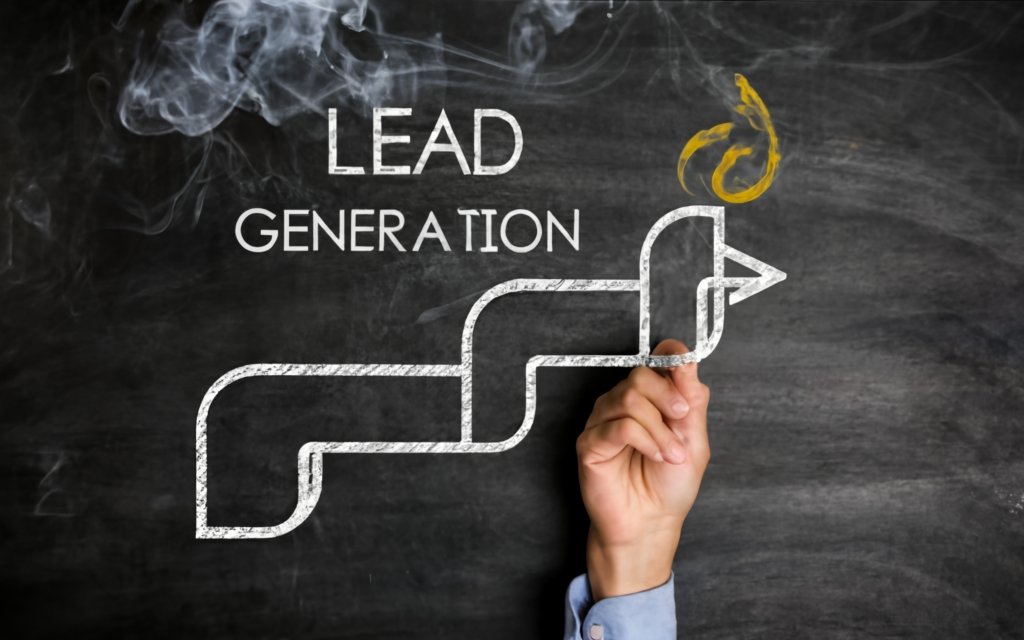
Tools and Technology to Enhance Your Lead Generation Pipeline
Leveraging a powerful martech stack and purpose-built lead gen tools is essential for executing a scalable, high-performance pipeline.
Here are some of the key technologies for optimizing pipeline productivity:
CRM Platform (eg Salesforce)
A CRM centralizes all prospect and customer data, manages pipeline stages, and tracks deal progress. Integrating your CRM with marketing provides a single source of truth. Features that enhance pipeline management include:
Lead, Contact and Account Management – record profiles, track communications, and document account history.
Pipeline Visualization – drag-and-drop pipeline stage modeling with forecasting.
Lead Scoring – score leads based on activities, profile data, and behaviors.
Sales Collaboration – manage tasks, activities, and team communication.
Workflow Automation – configure lead nurturing and sales workflows and alerts.
Reporting and Dashboards – analyze pipeline performance by stage, source, campaign etc.
Salesforce, HubSpot CRM, Microsoft Dynamics, SugarCRM, Zoho are popular platforms with pipelines and automation.
Marketing Automation Platform (eg Marketo, HubSpot)
Marketing automation adds top-of-funnel capabilities to track website interactions and automate multi-channel nurturing campaigns. Features that enhance pipelines include:
Lead Capture and Tracking – capture form fills, website visits and behavior.
Lead Scoring and Segmentation – score and group leads using filters and profile data for tailored treatment.
Multi-Channel Nurturing – deliver triggered emails, ads, social posts.
CRM Integration -bi-directional sync of leads, contacts, activities.
Reporting – analyze campaign ROI, engagement rates.
Marketo, HubSpot Marketing Hub, Adobe Campaign, Ontraport, and Act-On are top marketing automation platforms.
Lead Capture Tools (eg landing pages, forms)
Specialized lead capture tools help grab visitor information through compelling pages and forms.
Landing Pages
Services like Unbounce, Instapage, and Leadpages help create high-converting pages with A/B testing.
Forms and Surveys
Typeform, Jotform and Google Forms help capture leads through engaging forms.
Email Capture
Tools like Hello Bar, Exit Intent Popups and Leadfeeder convert traffic.
Chatbots
Bots from Drift, Ada, Intercom engage and qualify visitors.
Capturing lead data is the critical first pipeline stage.
Customer Intent Data Tools
Intent data identifies prospects actively researching solutions so you can target and accelerate them.
Buyer Intent Keywords
Tools like Bombora, Demandbase, and G2 track research keywords.
Target Account Profiling
Reveal tech stacks and pain points for key accounts.
Web Visitor Profiles
Identify anonymous website visitors from target firms.
Buyer Journey Stage
Determine stage from research patterns.
Intent data helps focus pipeline effort on hottest leads only.
Conversational Marketing Platforms
These tools allow you to engage, nurture, qualify, and convert leads in real-time via live chat and messaging.
They can capture lead details through conversational bots, website chat, and in-ad messaging. Advanced platforms like Drift and Ada integrate with marketing automation.
This real-time engagement accelerates pipelines. Other tools include Intercom, LiveChat, Crisp.
In summary, leveraging the right mix of supportive technologies turbocharges the efficiency and effectiveness of your pipeline operations. The payoff is a predictable, high-velocity flow of qualified leads.
Let me know if you need any clarification or have additional recommendations for this section. I’m happy to add more tools or details as needed.
Common Challenges and How to Solve Them
Even well-designed lead generation pipelines run into roadblocks. Being aware of the most common issues and corresponding solutions will prepare your team to proactively address challenges before they obstruct pipeline flow.
Aligning Sales and Marketing Goals
Mismatched priorities between sales and marketing manifest in unproductive finger-pointing. Marketing feels sales wastes the leads generated, while sales feels marketing produces low-quality leads.
Solutions:
- Set joint KPIs – agree on lead quality definition, sales acceptance rates, pipeline targets.
- Increase transparency – share reports on lead performance, keep all informed of goals.
- Schedule quarterly strategy alignment meetings to review pipeline performance and set joint tactics.
- Incentivize based on shared goals and overall revenue, not individual team metrics.
Producing Quality Lead Volume
Marketing often struggles to generate sufficient qualified leads to meet sales demands. This results in sales prospecting to fill the gap.
Solutions:
- Map content to the buyer’s journey to nurture better.
- Test new lead gen channels beyond website conversions.
- Purchase targeted lead lists and explore lookalike modeling.
- Optimise campaigns based on cost-per-lead, channel contribution, and lead quality.
Data and Tech Stack Fragmentation
Disjointed tech stacks result in disconnected data, duplicated effort, and gaps across pipeline stages.
Solutions:
- Consolidate onto a integrated stack like Salesforce + Marketing Cloud where possible.
- Build pipelines and automations within one primary CRM platform.
- Use marketing automation, CRM, and MAP data integrations to unify.
- Centralize lead database into a customer data platform (CDP).
Lack of Documented Processes and SLAs
Undefined processes and handovers between sales and marketing cause leads to stall, get lost, or become mismatched.
Solutions:
- Map and document complete lead lifecycle including SLAs between teams.
- Ensure they are tracked and visible across the martech stack.
- Automate and build alerts around handovers.
Difficulty Identifying High-Intent Leads
Generic inbound leads lack signals to indicate buying urgency and priority follow-up.
Solutions:
- Incorporate intent data feeds to identify prospects researching solutions.
- Prioritize leads visiting targeted product and pricing pages.
- Monitor web activity across devices to identify anonymous high-value visitors.
- Use demand generation ads and content to attract high-intent prospects.
Addressing these common pipeline problems comes down to communication, collaboration, and adopting the right processes, metrics, and technologies. Developing joint ownership between sales and marketing ensures smooth pipeline flow.
Let me know if you would like me to expand on any part of this section further. I can provide additional examples and details if needed.
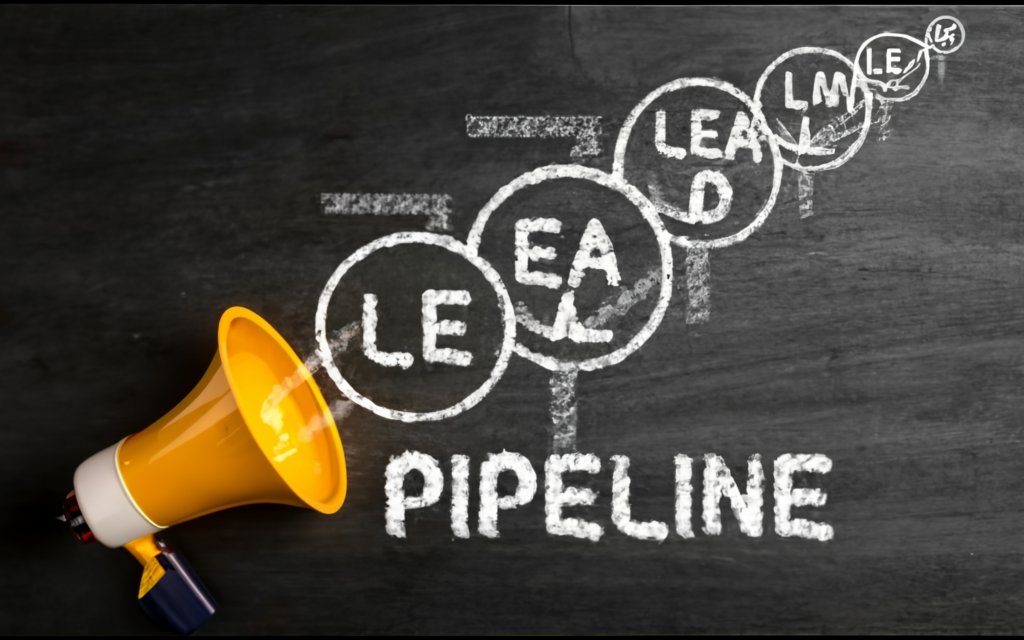
Key Takeaways
Implementing a high-performance lead generation pipeline is crucial for driving predictable revenue growth. Here are the key takeaways:
- The pipeline aligns marketing and sales around lead processes from attraction to conversion.
- Key components include sourcing, capture, nurturing, qualifying, and converting leads.
- Lead nurturing develops relationships and guides buyers through the journey with targeted content.
- Leverage marketing automation, omni-channel delivery, and CRM to nurture and track leads effectively.
- Focus nurturing on compelling content personalized to each buying stage and mapped to the buyer’s journey.
- Track key pipeline metrics including volume, velocity, cost per lead, and conversion rates. Continually optimize based on data.
- Support the pipeline with AI-powered marketing technology including CRM, marketing automation, and customer data platforms.
- Address common challenges like team alignment, lead quality, fragmented data, and undefined processes and SLAs.
- A structured pipeline creates visibility and drives teamwork between sales and marketing for improved results.
- The payoff is predictable lead flow, shorter sales cycles, and a scalable process for business growth.
Implementing these lead pipeline strategies and best practices provides the foundation for lead generation excellence.
Let me know if you would like me to modify or expand this summary section in any way.
Frequently Asked Questions
What are the key stages of the lead generation pipeline?
The main stages are lead sourcing, lead capture, lead nurturing, lead qualification, and lead conversion. Each stage has specific goals and tactics to move leads through the funnel.
How can I increase pipeline visibility?
Tools like CRM and marketing automation provide visibility into pipeline health and metrics. Dashboards and reports should be optimized to track key pipeline KPIs.
How do I align sales and marketing around the pipeline?
Establish joint SLAs, processes, and KPIs. Increase transparency through shared reports and regularly sync on strategy. Incentivize based on shared pipeline goals.
What technologies support pipeline optimization?
CRM, marketing automation, lead capture, intent data, and conversational marketing tools all enhance pipelines through automation and integration.
How do I improve lead nurturing effectiveness?
Leverage marketing automation to deliver personalized, multi-channel campaigns matched to the buyer’s journey. Use lead scoring to refine.
What metrics indicate pipeline optimization opportunities?
Conversion rates, sales cycle length, lead quality, cost per lead, channel contribution all provide optimization insights when analyzed.
How can I ensure lead quality from my pipelines?
Implement lead scoring, buyer persona targeting, and lead qualification models. Continually refine based on lead performance.
How do I choose the right lead nurturing content?
Map content to each buying stage while personalizing based on interests. Test content performance continuously.
What common pipeline problems should I be aware of?
Watch for misalignment between sales and marketing, gaps in processes and SLAs, fragmented data, and difficulty engaging high-intent leads.
Let me know if you would like me to add or expand on any of these questions. I can add more FAQs to cover any other important lead pipeline topics.

